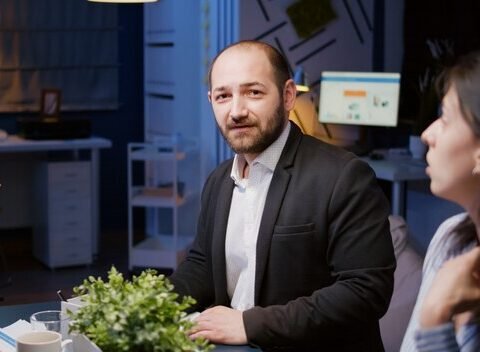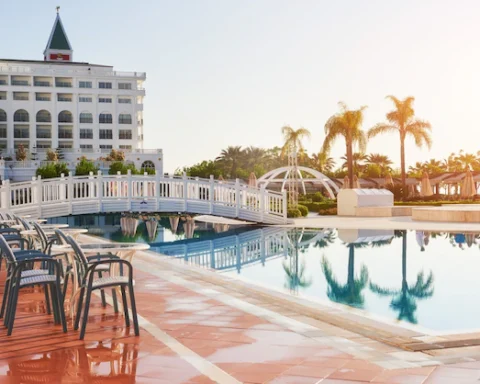In a world where inclusivity is often discussed but rarely fully implemented, it takes true dedication to create something that makes a real impact. Marilena Carulli, an advocate for accessibility in Italy, has done just that. She has transformed a beautiful beach along Italy’s Adriatic coast into a haven where visually impaired individuals can enjoy the sea and sand as freely as anyone else. Known as the “Blind Beach,” this project is a shining example of how passion and empathy can lead to meaningful change.
In this blog post, we’ll explore the inspiring story of Marilena Carulli, her motivations, and how her efforts have made the beach experience more inclusive for the visually impaired.
1. Who is Marilena Carulli?
Marilena Carulli is an advocate for accessibility, but more than that, she is someone deeply committed to making the world more inclusive. Her work with the visually impaired community in Italy stems from years of volunteering with various disability support organizations. Through this work, Marilena became acutely aware of the barriers that exist for people with disabilities, especially when it comes to enjoying simple pleasures like a day at the beach.
Despite advancements in accessibility in public spaces, beaches in Italy—and many other parts of the world—remain challenging for those who are visually impaired. The vast, open nature of a beach, combined with the lack of clear pathways, makes navigation extremely difficult. This realization led Marilena to dream of creating a beach where the visually impaired could move freely and enjoy the environment without constantly relying on assistance.
2. The Vision Behind the Blind Beach
Marilena’s idea for the Blind Beach didn’t happen overnight. It was the result of years of working closely with visually impaired individuals and understanding their unique challenges. Beaches are often difficult to navigate, even for those with full sight. For someone who relies on touch, sound, and spatial awareness, the beach can feel overwhelming and inaccessible.
Marilena’s vision was to create a space that would allow the visually impaired to enjoy the beach with independence and dignity. She wanted to remove the barriers that made beach visits so challenging and replace them with features that provided guidance and support. This led to the development of the Blind Beach, a fully accessible beach with special features that allow visually impaired visitors to experience the sea in a safe, enjoyable, and independent way.
3. Features That Make the Blind Beach Unique
The Blind Beach is more than just a beach with minor adjustments; it’s a place specifically designed for the visually impaired. Here are some of the key features that make it stand out:
Tactile Pathways: The beach is equipped with raised, textured walkways that visually impaired visitors can use to navigate the beach. These pathways guide them from the parking lot to the water’s edge, ensuring they can move around without assistance.
Audio Guidance: Discreet speakers are placed at key locations along the beach, offering subtle audio cues that help visitors orient themselves. These sounds provide information about where they are in relation to important landmarks, like restrooms, the water, or food stalls.
Specially Trained Staff: The beach staff are not just regular attendants—they are specially trained to assist visually impaired guests. They know how to offer help without making visitors feel dependent or uncomfortable, ensuring that everyone has an enjoyable experience.
Accessible Beach Gear: Specially designed loungers, umbrellas, and even tactile maps help visually impaired guests feel more at ease. These items make it easier for them to enjoy a full day at the beach without encountering obstacles.
These thoughtful features have made the Blind Beach a groundbreaking project in Italy and beyond, receiving praise for its innovation and dedication to accessibility.
4. Impact on the Visually Impaired Community
For many visually impaired people, going to the beach was once a daunting and overwhelming task. The Blind Beach has changed that entirely. It offers them the freedom to enjoy the beach like anyone else—on their own terms.
One regular visitor described the experience beautifully: “For the first time, I felt truly independent. I didn’t need to hold someone’s hand or ask for constant directions. I could enjoy the beach at my own pace, with complete freedom. It was an incredible feeling.”
The Blind Beach has also been a blessing for families with visually impaired children. Parents who once hesitated to bring their children to the beach can now relax, knowing that their kids can safely explore and play without the usual challenges. It has become a space where children can experience the joys of the sea without their disability holding them back.
5. Marilena Carulli’s Ongoing Mission for Accessibility
While the Blind Beach has been a major success, Marilena Carulli is not stopping there. Her goal is to inspire similar projects not only across Italy but worldwide. She believes that accessibility should be a natural part of designing public spaces and not an afterthought. Marilena continues to push for more accessible recreational areas, from parks to museums, so that people with disabilities can enjoy life’s pleasures just like anyone else.
Her mission is a powerful reminder of how much of a difference one person can make when they are driven by empathy, passion, and a commitment to equality.
Conclusion
Marilena Carulli’s Blind Beach is more than just a beautiful spot along Italy’s coast—it’s a symbol of inclusivity and empowerment. Thanks to her tireless work, visually impaired individuals can now experience the beach with freedom and independence, enjoying the sand, sea, and sun without barriers.
The Blind Beach has become a model for accessible tourism, demonstrating that thoughtful design and community collaboration can create spaces where everyone can participate. Marilena’s work shows us that with determination and empathy, we can create a more inclusive world, one beach at a time.
Her journey is an inspiration to us all, and the Blind Beach is just the beginning. With people like Marilena leading the charge, the future of accessibility looks brighter than ever.











